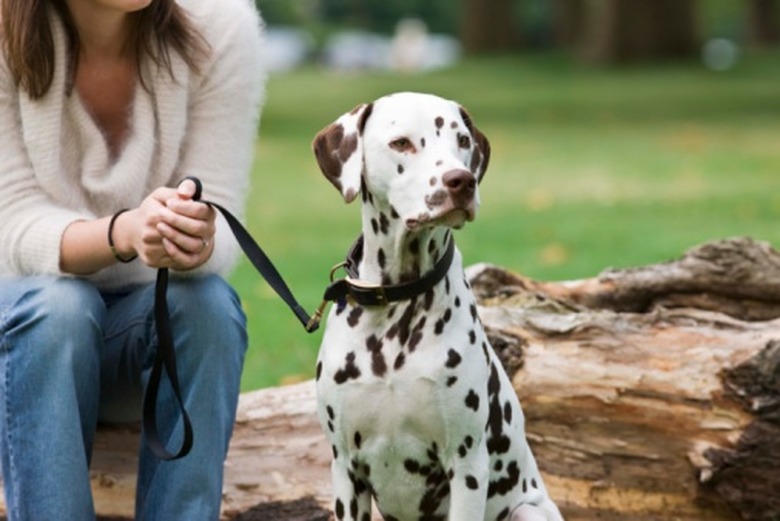What Are The Causes Of Dark Spots On A Dog's Skin?
Some dogs, like Dalmatians, are born with dark spots, but in other cases, the development of dark spots on a dog's skin may occur later. These areas of dark skin, or hyperpigmentation, are not dog age spots but a symptom of another condition, such as acanthosis nigricans, skin trauma, or hormonal disorders.
Symptoms of dog hyperpigmentation
Symptoms of dog hyperpigmentation
Although specific symptoms can vary depending on the dog and underlying condition, dark spots will usually initially appear in the dog's armpit or groin area. The dark pigmentation may be evenly spread on the area or may appear in patches. Other symptoms may include inflammation, lesions, itching, and hair loss. In some cases, dogs may also have a skin infection that puts off a foul odor.
If you notice changes in skin color, make an appointment with your veterinarian to diagnose the problem and start the appropriate treatments.
Primary hyperpigmentation in dogs
Primary hyperpigmentation in dogs
Symptoms of primary hyperpigmentation, or acanthosis nigricans, usually appear in dogs under a year old. It is a congenital skin condition that is most common in dachshunds, although it can occur in other breeds as well. Your veterinarian can diagnose the disorder with a physical exam.
There is no cure for the disease, and some dogs won't experience complications, although the dark spots are typically permanent. Other dogs may develop problematic lesions and itching. Treatment options include medicated shampoos, steroid treatments, and antibiotic and anti-fungal medications to treat any secondary infections that develop. Melatonin injections may also be helpful.
Secondary causes of dark spots
Secondary causes of dark spots
Hyperpigmentation may also occur after some type of inflammation and is secondary to another disease or condition. Skin inflammation and friction typically cause hyperpigmentation, and you may also see a thickening of the skin and hair loss.
It can occur at any age and in any breed of dog. The condition is most common in dogs with abnormal hormone levels from conditions such as hypothyroidism or Cushing's disease, allergies, contact dermatitis, obesity, and skin infections. Pests like fleas and mites may also lead to hyperpigmentation.
Your veterinarian will diagnose secondary hyperpigmentation with a physical exam, but additional testing may be needed to determine the underlying cause. This may include skin scraping, allergy testing, and bloodwork. If the hyperpigmentation is severe, your vet may refer you to a veterinary dermatologist.
Treatment options for hyperpigmentation
Treatment options for hyperpigmentation
The primary treatment will be to address the underlying condition. This may include treatment for fleas or other pests, thyroid medications for hypothyroidism, or allergy medication or steroids to treat allergies. If the problem is a food allergy, you may need to adjust your dog's diet to remove those ingredients. Antibacterial or anti-fungal medications will be prescribed to manage any skin infections. Since hyperpigmentation from friction is more common in obese dogs, your vet may help develop a weight loss plan for your pup including diet and exercise.
The hyperpigmentation itself rarely requires treatment, but in severe cases, your veterinarian may prescribe corticosteroids to reduce inflammation. Vitamin E may also help the skin recover. Typically, dogs recover within a few months at most once the underlying condition is treated.
Preventing hyperpigmentation in dogs
Preventing hyperpigmentation in dogs
There is little you can do to prevent hyperpigmentation directly, as it is either congenital or a symptom of another condition. Ensuring your pup is as healthy as possible is the best thing you can do. This includes regular grooming so you can recognize any changes to the skin and coat as soon as possible. Feed your dog a healthy diet and make sure your pup gets sufficient exercise to maintain a healthy weight. Use a flea preventative regularly.
